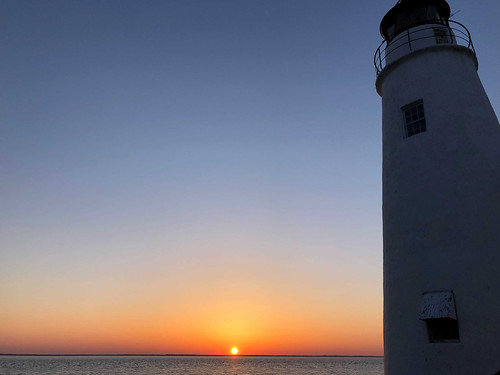Secretary’s Message – January 2024
Welcoming a New Year to expand on our successes at the Department of Natural Resources

Photo by by Erin Pant, submitted to the Maryland DNR Photo Contest.
We’re kicking off 2024 on a hopeful note at the Department of Natural Resources thanks to positive signs in two important indicators for the health of the Chesapeake Bay–dissolved oxygen and oysters.
One of the primary indicators of the Bay’s overall health is the annual hypoxia measurement – conducted by the Department of Natural Resources and our counterparts in Virginia. Scientists monitor what is called the “dead zone,” which are areas of the Bay with dissolved oxygen levels so low that underwater life such as crabs, fish, and oysters can’t survive. In 2023, hypoxic water in the Bay was measured to be about 0.52 cubic miles, nearly half the historic average of 0.97 cubic miles, and the smallest on record since Bay-wide monitoring began in 1985.
Hypoxia is caused by algal blooms fueled by nutrient pollution–nitrogen and phosphorus–in the water. Although weather plays a major role in hypoxia–and the below average rainfall last year helped us in this regard–the record low hypoxic volume of water is an indication that efforts on the land to reduce polluted runoff from farms, urban areas, and elsewhere could be working.
Among those efforts is Maryland’s 5 Million Trees Initiative, and we are proud to announce we are at nearly 10 percent of the state’s goal after just the first two years with more than 470,000 trees planted. A massive tree planting effort like this one requires coordination between tree nurseries, volunteers, and dozens of partner organizations. We believe the infrastructure and partner development is now in place to begin accelerating our planting efforts to ensure Maryland reaches its 5 million tree planting goal by 2031.
Other good news for the Bay was observed in DNR’s Fall Oyster Survey, which recorded a remarkable year for juvenile oyster production in Maryland waters, finding both prolific numbers and a widespread distribution of spat throughout many regions of the Chesapeake Bay. The survey’s spatfall intensity index, a measure of reproductive success and potential population growth for oysters, was 86.8 spat per bushel, nearly four times the 39-year median of 23.6 spat per bushel and the fifth highest in that timeframe. Spat are also known as juvenile oysters. Oyster larvae become spat once the larvae permanently attach to an oyster shell or another hard surface.
We have not recorded this extent of oyster spat recruitment in the fall survey in a generation in terms of quantity and distribution of spat.
This was also the fourth straight year the oyster survey observed above-median results for juvenile oysters, an encouraging sign that the state can string together several years of positive oyster reproduction. We plan to build on these natural spatsets by continuing oyster restoration efforts through strong partnerships with industry and community groups as well as by promoting and incentivizing aquaculture.
These results are significant because oyster populations have consistently declined during the past 100 years. In response, Maryland together with partners has undertaken tributary-scale restoration efforts to add more oysters to the Bay during the previous decade. And those efforts continue to grow. Last year, Maryland set a record for new oyster plantings by adding 1.5 billion to the Bay. These efforts have been aided by the General Assembly in recent years, which has voted for stronger regulations to protect oyster sanctuaries and improve restoration efforts.
Oysters are known as a keystone species in the Chesapeake Bay since their reefs provide habitat to other species such as crabs and fish. The bivalves can also filter gallons of water per day–helping to naturally clarify the Bay. And of course they are important to our economy and the culture of Maryland.
These are among the successes we intend to build on this year as we continue working for a cleaner Bay and a better Maryland for everyone at the Department of Natural Resources.
Josh Kurtz is Secretary of the Maryland Department of Natural Resources.

 1-888-373-7888
1-888-373-7888 233733
233733